|
||||||||
|
|
|
2015-04-20 ArtNo.45475
◆Review:The baptism of the Holy Spirit (Who Is That?)
 ○Jesus went up to Jerusalem, not publicly, but in secret. When the Jewish feast of Tabernacles, which begins on the 15th day of Tishri (the seventh month in the Hebrew calendar), was near, though his brothers invited Jesus to go up to Jerusalem together with them, he stayed in Galilee, saying, "The right time for me has not yet come." However, after his brothers had left for the Feast, he went also, not publicly, but in secret. (John 7:10) At the Feast the Jews were watching for him and asking, "Where is that man?" Among the crowds there was widespread whispering about him. But no one would say anything publicly about him for fear of the Jews. (John 7:11-13) 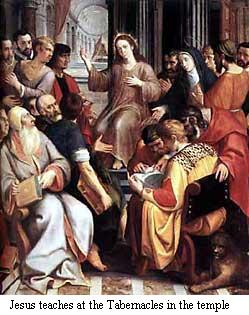 ○Jesus Teaches at the Feast Not until halfway through the Feast did Jesus go up to the temple courts and begin to teach. (John 7:14) Some of the people of Jerusalem began to ask, "Isn't this the man they are trying to kill? Here he is, speaking publicly, and they are not saying a word to him. Have the authorities really concluded that he is the Christ?" (John 7:25-26)  ○They had a premonition that some anomaly had been occurring When they saw a man, who had driven out the sheep and cattle for sacrifice with a whip made of cords and overturned tables of the money changers during the Passover feast, not only entering the temple courts again and even preaching, the crowd and even the clergy must have had a premonition that some anomaly had been occurring. At that point Jesus cried out, "Yes, you know me, and you know where I am from. I am not here on my own, but he who sent me is true. You do not know him, but I know him because I am from him and he sent me." (John 7:28-29)  ○He who sent me is true Although not a few of the temple clergy must have been frustrated on Jesus' preaching and angry with him, they seem to have not been able to lay a hand on the elder brother of James, who served as the high priest for the Nazirites entering into the holy areas of the Temple and won the high honor of the Righteous among the clergy in Jerusalem. And it was also obvious to everyone without mentioning by Jesus that a tacit consent has been given by Annas, the former high priest and his son-in-law Caiaphas, the incumbent high priest. The Gospel of John describes; "At this they tried to seize him, but no one laid a hand on him, because his time had not yet come." (John 7:30) Later, High priest Caiaphas testified at a meeting of the Sanhedrin; "You know nothing at all! You do not realize that it is better for you that one man die for the people than that the whole nation perish. He will die for the Jewish nation, and not only for the nation but also for the scattered children of God, to bring them together and make them one." The Gospel adds, "So from that day on they plotted to take his life." (John 11:49-57)  ○The Holy One of God. "Who are you?" the Jews asked Jesus, who had once withdrawn to the Mount of Olives and appeared again in the temple courts at dawn of the next day. "Just what I have been claiming all along," Jesus replied. (John 8:25) Then he added, "When you have lifted up the Son of Man, then you will know that I am the one I claim to be and that I do nothing on my own but speak just what the Father has taught me." (John 8:28) The writer of the Gospel of John makes clear that the Word, which was with God and was God in the beginning, and through which all things were made, is the entity of Jesus through out of the Gospel. (John 1:1-3) While the Greek word "Autogenes (God's one and only Son)" means Self-Generated or Self-Conceived in terms of Gnosticism, Simon Peter made a sound like somewhat Gnostic and thus Buddhistic too testimony, saying, "We believe and know that you are the Holy One of God." (John 6:68-69 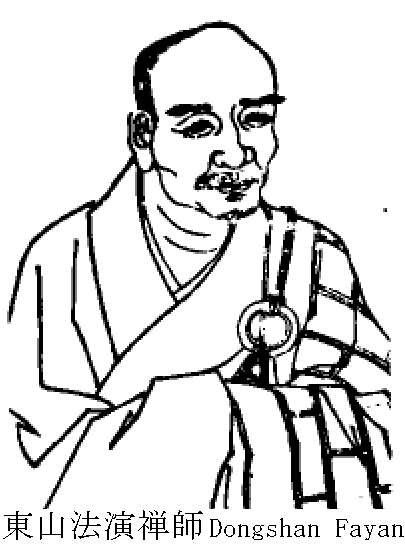 ○Who Is That? One day, Dongshan Fayan (1024-1104), one of the great Zen masters during the Sung Dynasty in China, said to the assembly, "Even Shakyamuni Buddha, who attained spiritual awakening under the Bodhi tree and testified, 'Holy am I alone throughout heaven and earth' and Maitreya Buddha, who is supposed to descend and to save the world 5,670 million years after Shakyamuni's death, are merely someone's slaves. Tell me, who is it?" Wumen Huikai(1182-1260), who is known as one of the third generation disciples of Fayan-Chanshi (Zen master), commented this koan recorded in 《Wumenguan Case 45》, "If you can see that one clearly, it will be like bumping into your own father at a crossroads; you don't have to ask anyone else whether or not that's the one." He also gave us very kind advice in his following verse; "Don't draw another's bow, Don't ride another's horse, Don't discuss others' errors, Don't mind others' business." If anyone asks Jesus who it is, he won't hesitate to answer "A little child seven days old." (Thomas : 4、Luke 18:16)  Once, someone asked Mitsuru Toyama(1855-1944), who is known as a Pan-Asianist having helped the Korean, Chinese, Indian and Vietnamese nationalists exiled themselves into Japan, such as Gim Okgyun, Sun Wen, Chiang Kai-shek, Rash Behari Bose and Phan Boi Chau respectively, "Under whom did you study Zen Buddhism?" Toyama looked at an old gardener in front of the garden and replied, "I every day study Zen from this old man."  ○Aramaic origin and "The Saint Thomas Christian churches" Interestingly, the writer of the Gospel of John calls native Hebrew speakers "the Jews" who lived around Jerusalem and the Judean countryside and seems to distinguish them from other crowd who spoke Aramaic, Palestinian common language at that time. As if Galileans had been not the Jews, including the writer himself. Incidentally, Jesus gave his close disciples Aramaic names such as Cephas (Peter in Greek) or Thomas (Didymus in Greek) and he himself seems to have spoken Aramaic. The Saint Thomas Christian churches in Kerala, India, of which origins can be traced to the evangelistic activity of Thomas the Apostle in the 1st century, uses Syriac in liturgy. Their original liturgical language is said to have been Aramaic and later changed to Syriac. In contrast, today's Christianity, of which origin can be traced to the primitive church born in Jerusalem one and half months after Jesus' execution, sees Greek version of Old Testament compiled in Alexandria as the original. And almost without exception, the original versions of the books of the New Testament were also written in Greek.  ○Syncretism After the Greek version of Old Testament was compiled in Alexandria, the leading cultural center of the Hellenistic world, under the tide of Syncretism (cultural fusion of east and west) which occurred following the east expedition of Alexander the Great in the late 4th century BC, churches were set up, being separated from Synagogue, in various places by the Gentiles, who were converted to Judaism but did not understand Hebrew. Having occurred in the Mediterranean coast, the tidal wave of church expansion, after two to three hundred years, finally reached Jerusalem, the headquarters of Judaism and the Jerusalem Church was established as the umbrella organization for gentile churches. James, the brother of Jesus, was appointed as its first bishop. Thus the High Priest Caiaphas' aspiration to call back the scattered children of God to Jerusalem was realized and the superficial honeymoon period of Judaism and Christianity lasted for a while. In this period, the Jerusalem Church was regarded as an affiliated organization of Judaism or one of the Jewish sects.  ○Great schism However, after the Jewish War, the main faction of Judaism accused the Jerusalem church of traitor, because the latter had escaped from Jerusalem before being surrounded by the Roman army. The church side also fought back. Then the great schism betweem Judaism and Christianity occurred. After the Jewish War, Judaism, which had lost the Temple, was forced to transform into a religion that is based on scripture from the one centered on traditional temple rituals. Therefore, the clergy set up the Council of Jamnia and embarked on selection of the Hebrew Bible canon seriously. The New Testament was also compiled almost this period. Thus its contents has been strongly reflected the conflict between the main faction of Judaism and the Jerusalem church. The original text of the New Testament is, almost without exception, written in Greek. Therefore it is seen plainly that the Hellenist-Judaism was headwaters of Christianity. However, Jesus seems to have spoken Aramaic throughout his life and preached in Aramaic. Therefore the Saint Thomas Christian churches in Kerala, India, which uses Syriac in liturgy, of which origin is Aramaic, may tell the scent of original Jesus' preaching.  ○What is "Baptism with The Holy Spirit"? According to the dialectic of the Gospel of John, 【Thesis】"A man can possess eternal life through accepting testimony of the Son of man and being baptized by him." (John 5:24) 【Anti-thesis】But "The one who comes from the earth cannot accept the testimony by one from heaven."(John 3:32) How then can a man possess eternal life? 【Synthesis】"If you want to be baptized with the Holy Spirit, you can just go back to the word which was with God in the beginning (John 1:1) and certify that God is truthful. (John 3:33)" When he said, "You are Huichao," Zen Master Fayan thrusted vivid Self in Huichao in front of his eyes. (P.176) Purchase here Purchase here [Reference] ○《The Gateless Barrier Case 45》: Who Is That? [Koan] Wuzu TongShan FaYan said to the assembly, "Even Shakyamuni and Maitreya are merely someone's slaves. Tell me, who is it?" [Wumen's Comment] If you can see that one clearly, it will be like bumping into your own father at a crossroads; you don't have to ask anyone else whether or not that's the one. [Wumen's Verse] Don't draw another's bow, Don't ride another's horse, Don't discuss others' errors, Don't mind others' business. ○《The Gospel of Thomas》Verse 4 Jesus said, "The person old in days won't hesitate to ask a little child seven days old about the place of life, and that person will live. For many of the first will be last, and will become a single one." ○《The Gospel of Luke》Chapter 18 Verse 16-17 But Jesus called the children to him and said, "Let the little children come to me, and do not hinder them, for the kingdom of God belongs to such as these. I tell you the truth, anyone who will not receive the kingdom of God like a little child will never enter it." 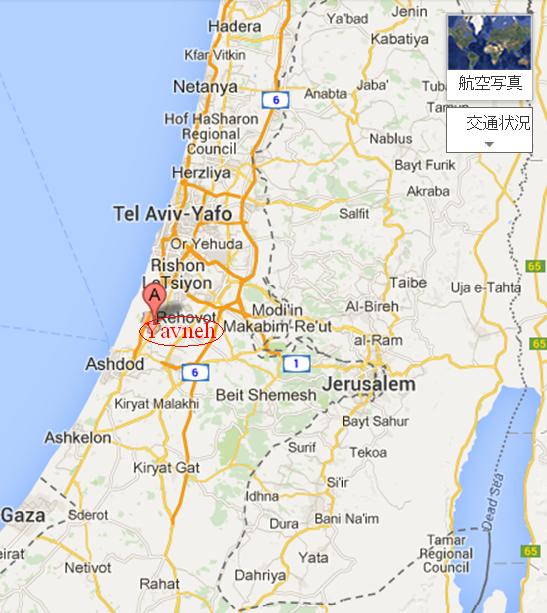 ○Council of Jamnia The Council of Jamnia, presumably held in Yavneh, a town in the west direction of Jerusalem, was a hypothetical late 1st-century council at which the canon of the Hebrew Bible was alleged to have been finalized. First proposed by Heinrich Graetz in 1871, this theory was popular for much of the twentieth century. However, it was increasingly questioned from the 1960s onward and the theory has been largely discredited. (English version Wikipedia) ○Saint Thomas Christian churches The Saint Thomas Christians are an ancient body of Christians from Kerala, India, who trace their origins to the evangelistic activity of Thomas the Apostle in the 1st century. They are also known as "Nasranis" because they are followers of "Jesus of Nazareth". The term "Nasrani" is still used by St. Thomas Christians in Kerala. They are also called Syrian Christians because of their use of Syriac in liturgy. Their original liturgical language was Aramaic which was later changed to Syriac. They are also known as Malabar / Malankara Mar Thoma Nasranis, because these Christians are from Kerala that was also known as Malabar or Malankara. Their language is Malayalam, the language of Kerala. (wikipedia) <1>The Mar Thoma Syro-Malabar Catholic Church (Kodungaloor, Kerala) Believed to be one of the seven churches in India built by St. Thomas.  <2>The St. Thomas Syro-Malabar Catholic Church (Palayur, Kerala) Believed to be one of the seven churches said to be built by Thomas.  <3>The St. Thomas Syro-Malabar Catholic Church (Kottakayal, North Paravur, Kerala) Believed to be one of the seven churches said to be built by Thomas.  <4>The St. Mary's Orthodox Church (Niranam, Kerala) Believed to be one of the seven churches said to be built by Thomas. 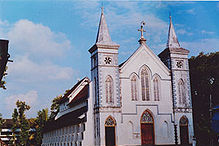 <5>The St. Thomas Syro-Malabar Catholic Church (Kokkamangalam, Kerala) Believed to be one of the seven churches said to be built by Thomas.  <6>St. Mary's Orthodox Church (Thiruvithamcode Arappally = Royal Church) Believed to be founded by Thomas in 63. It is known as Arapalli, short form of Arachan Palli (King’s Church). 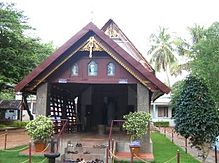 <7>St Mary's Syro-Malabar Catholic Church (Kudamaloor) It was built by the king of Chempakassery in AD 1125  Your Comments / UnsubscribeSEAnewsFacebookSEAnewsGoogleSEAnews eBookstoreSEAnews eBookstore(GoogleJ) |
|
[Your Comments / Unsubscribe]/[您的意见/退订]/[ご意見/配信停止]
Please do not directly reply to the e-mail address which is used for delivering the newsletter. 请别用递送新闻的邮件地址而直接回信。 メールをお届けした送信専用アドレスには返信しないで下さい。 |